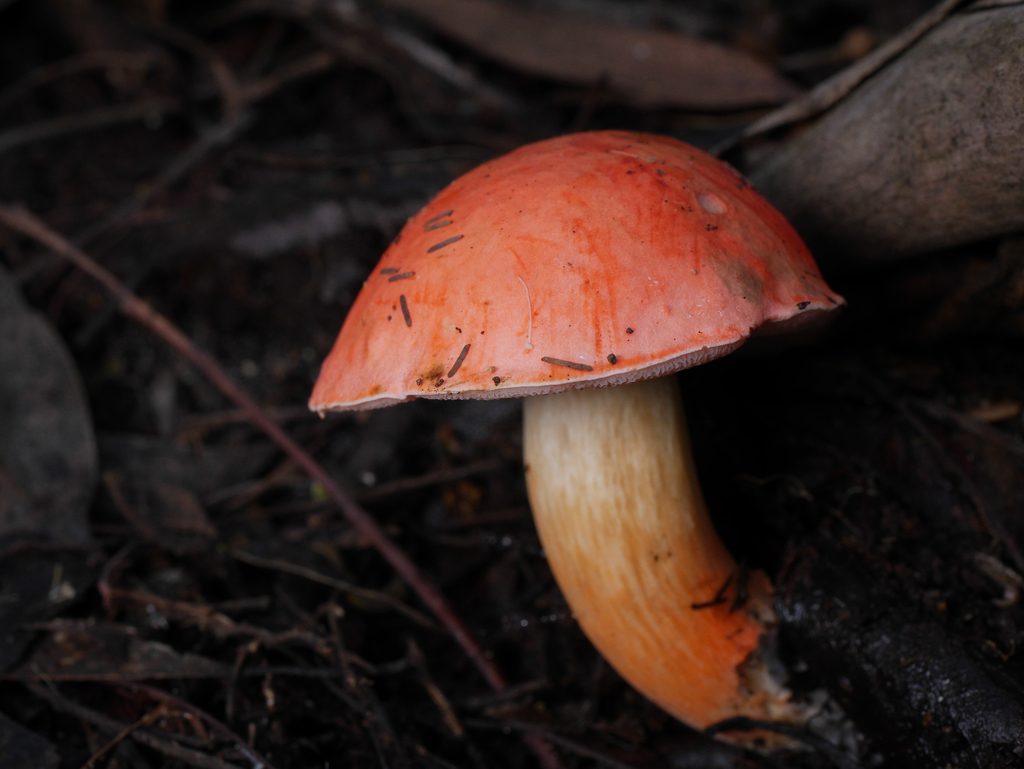

This page will cover some of the basics for Harrya chromapes one of the few species in the small genus Harrya, of the family Bolitaceae.
Harrya Chromapes- The Yellowfoot Bolete
.JPG/:/cr=t:7.63%25,l:0%25,w:100%25,h:84.75%25/rs=w:1240,h:620,cg:true)
Yellow-foot
chromapes [chrom - (L: pigmented) + pes - (L: foot)] is the defining feature of this mushroom. The common names are "yellow-foot" or "chrome-foot", which is an almost literal translation from the Latin epithet.
This unassuming rosy cap usually sits higher than some other Boletes, with its 'foot' hidden below the forest debris. The convex pink-cap will fade to light brown and flatten out some with age. |
When pulled up, the cream-colored pores and rosy scabers may be the first things noticed if that bright yellow-foot is damaged or broken. |
Yellow foot and Mycelium | Where it Grows |
Pore Surface |
Other Details
|
Lookalikes
This is a pretty easily recognized species that is readily identified by its bright yellow base, its rosy colored cap and the reddish stipe ornamentation. The only possible lookalike in Alabama is a bit of a stretch even.
Tylopilus balloui
This bolete could only be confused as a lookalike if one were to do absolutely zero investigation of the mushroom's features. It's burnt orange cap could possibly take on a slightly rosy color as it fades, but will always be lacking the bright yellow stipe base and red stipe ornamentation that IDs Harry chromapes.
Please remember to seek other sources for confirmation before consuming any wild mushroom
.JPG/:/cr=t:25.71%25,l:0%25,w:100%25,h:37.5%25/rs=w:600,h:300,cg:true)
.JPG/:/cr=t:18.27%25,l:0%25,w:100%25,h:42.02%25/rs=w:600,h:300,cg:true)
.JPG/:/cr=t:30.86%25,l:0%25,w:100%25,h:54.35%25/rs=w:600,h:300,cg:true)
.JPG/:/cr=t:5.36%25,l:0%25,w:100%25,h:89.29%25/rs=w:600,h:300,cg:true)

